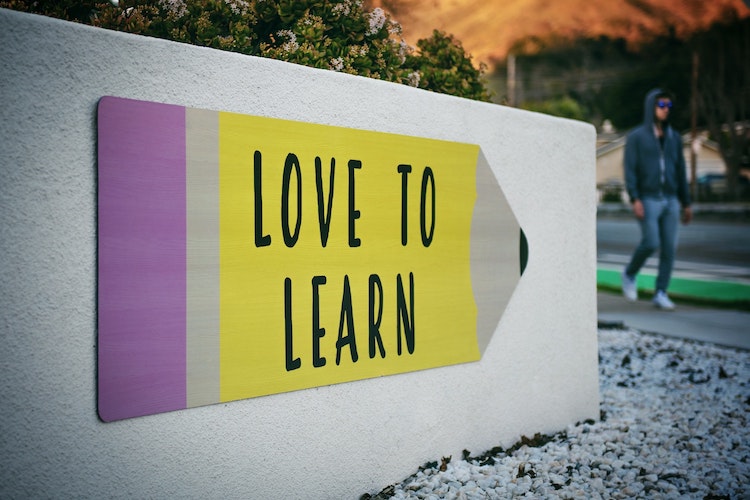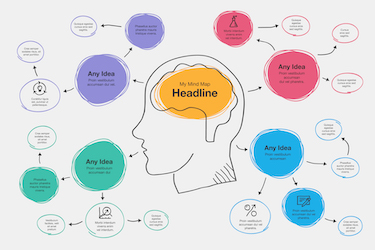Over the years many learning techniques have been developed, and many are incredibly effective in helping students learn their subject.
One of the most effective, is the Feynman technique.
Many people are already familiar with variations of this technique, as it is believed one of the best ways to consolidate your knowledge is by teaching it to someone else.
History
This learning method originates from Richard Feynman's study habits, during his time at Princeton. Where he would take a fresh notebook titled something like 'Everything I don't know', and write down everything he did not fully understand. From there Feynman would then research and fill the gaps in his knowledge.
If he found an area which he could not explain in 'simple' terms, he knew it was an area that needed work.
The Feynman Learning Technique Today
From Richard Feynman's study habits, developed the Feynman Learning Technique.
The core concept behind this learning method, is that if the subject is truly understood, then you should have no problem explaining it to a child. Though the technique itself works a little bit deeper than that.
When a person only has a loose understanding of a subject or idea, they will often rely heavily on industry jargon, and large words. When a person fully understands the material, they shouldn't need to rely on industry speak.
So by that logic, anyone who fully understands their subject, should be able to explain it to a young child, say an 11-12 year old. Children's brains are slightly less developed than that of an adult, therefore their ability to grasp and understand complicated subjects is also limited.
And that is what the Feynman Learning technique is all about. Understanding a subject well enough that you can teach it to a child.
This can be an invaluable learning technique in modern times, as many revision and study techniques focus more on teaching a person how to recall knowledge, than actually helping them understand the material.
How does the Feynman Technique work?
This entire learning method revolves around four key steps;
1. Identify Your Subject:
To begin, you start by writing down everything you know about the topic in question. Every time you learn something new, or find a new source of information, add it into these notes.
2. Teach It To A Child:
This is the part which makes up the large bulk of the Feynman technique. As we mentioned earlier- children do not understand jargon and complex theories, so the trick here is to rewrite your knowledge of the subject in simple, easy to understand chunks.
By teaching a complex subject to a child, you are forcing yourself to do two things:
- Simplify and explain the ideas into their most basic forms
- Teach a complicated idea in a short and concise manner.
Children will not comprehend the complex jargon, nor will they care to. So if you can successfully teach something to a child simply, and before you lose their interest then you likely understand your topic well.
3. Identify The Gaps In Your Knowledge:
At this point, you look at the areas and topics which you struggled to explain. This shows you where the gaps in your knowledge are, and allow you to focus your attention on those areas.
If you are still unsure after referring back to your notes, then it is time to hit the books, and do more research and revision, until you can explain any problem areas to children as well.
4. Organise And Simplify:
Finally, once you have identified and solidified your knowledge and 'problem areas' you can organise your notes.
Spin them into a tale, and read them aloud. Pretend to teach a class, and really listen to the language you are using. You will soon notice when the language begins to get complicated again, and it is time to simplify your notes some more.
Why is the Feynman Technique so effective?
Overall, Feynman's technique seems incredibly simple when broken down like so. And it is! But it does take a lot of work, as was mentioned earlier;
This technique puts an emphasis on understanding the material, not just recalling it.
And that is arguably why it is one of the most effective learning methods. Not only does it really consolidate the understanding of a topic, it also combines the efficiency of additional senses (in this case, speaking, writing and action), which in turn increase learning efficiency.
Practical Usages
Obviously, teaching a complicated subject to a child isn't necessarily ideal or even realistic for many. Finding a child who is willing to help you babble on about complicated theories is not always feasible.
Luckily, this method can be adapted.
So, you could teach your subject to a friend or family member who has no knowledge of it, and see what their comprehension of the material is afterwards. This method allows you to get away with slightly more technical language, but still forces you to keep it simple.
Another way this method can be applied, is by finding a toy to 'teach'. Often, when confronted with a childish object, we will automatically find ourselves simplifying our language.
The most important thing is simply that every explanation you give, is simple enough that someone new to the field, with no prior knowledge can understand it!
For example: The greenhouse effect
'The greenhouse effect is the process by which radiation from a planet's atmosphere warms the planet's surface to a temperature above what it would be without this atmosphere.' (Wikipedia)
Taken from the Wikipedia article on the topic, it is full of technical jargon and may be difficult to understand, if you are unfamiliar with the theory. However, when simplified, it equates to;
The Greenhouse Effect sees the Earth as a greenhouse.
The atmosphere works like the glass panels, letting in light and heat, but makes it difficult for it to leave again. This means that the Earth's surface has longer to absorb the warmth, and this makes the planet warmer.
Without the atmosphere, the heat would just bounce off the surface and back out into space. But because it has this barrier, it holds in the heat long enough to make the planet warmer.
Conclusion
The Feynman learning technique is an invaluable tool for any student looking to test and expand their understanding of a topic.
It allows people to find clear gaps in their knowledge, and effectively consolidate their knowledge while also revising and studying at the same time.
It promotes a critical analysis of your learning and capabilities, which really help to propel you forward in your learning.















